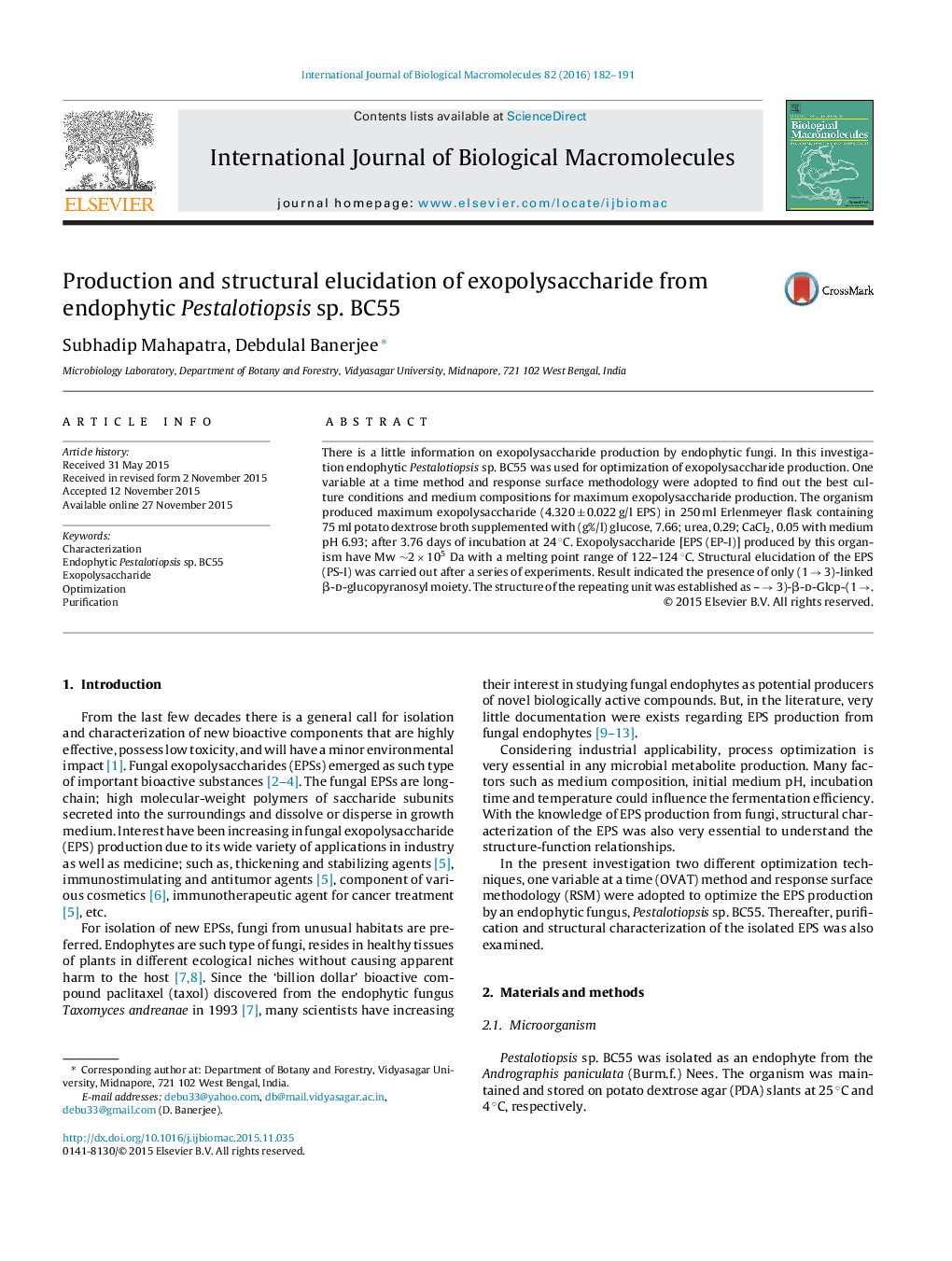| Article ID | Journal | Published Year | Pages | File Type |
|---|---|---|---|---|
| 8329919 | International Journal of Biological Macromolecules | 2016 | 10 Pages |
Abstract
There is a little information on exopolysaccharide production by endophytic fungi. In this investigation endophytic Pestalotiopsis sp. BC55 was used for optimization of exopolysaccharide production. One variable at a time method and response surface methodology were adopted to find out the best culture conditions and medium compositions for maximum exopolysaccharide production. The organism produced maximum exopolysaccharide (4.320 ± 0.022 g/l EPS) in 250 ml Erlenmeyer flask containing 75 ml potato dextrose broth supplemented with (g%/l) glucose, 7.66; urea, 0.29; CaCl2, 0.05 with medium pH 6.93; after 3.76 days of incubation at 24 °C. Exopolysaccharide [EPS (EP-I)] produced by this organism have Mw â¼2 Ã 105  Da with a melting point range of 122-124 °C. Structural elucidation of the EPS (PS-I) was carried out after a series of experiments. Result indicated the presence of only (1 â 3)-linked β-d-glucopyranosyl moiety. The structure of the repeating unit was established as - â 3)-β-d-Glcp-(1 â.
Related Topics
Life Sciences
Biochemistry, Genetics and Molecular Biology
Biochemistry
Authors
Subhadip Mahapatra, Debdulal Banerjee,
